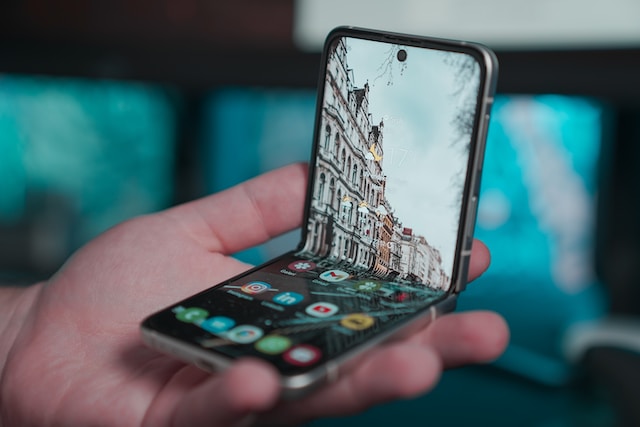What to Consider While Choosing a Touch Screen Flip Phone

In an era dominated by smartphones and their touchscreen interfaces, the charm of flip phones has not waned. Combining the nostalgic appeal of flip designs with modern touchscreen technology, touch screen flip phones offer a unique and practical choice for individuals seeking a blend of old-school aesthetics and contemporary functionality. However, choosing the right touch screen flip phone requires careful consideration of various factors to ensure it meets your needs and preferences. In this article, we delve into the key aspects to ponder when selecting a touch screen flip phone.
1. Design and Build Quality: The design and build quality of a touch screen flip phone play a significant role in both aesthetics and durability. Assess the materials used in construction, ensuring they are sturdy and can withstand regular usage. Consider factors such as hinge strength, overall ergonomics, and whether the phone fits comfortably in your hand and pocket. A well-built phone will not only look appealing but also withstand the test of time.
2. Display Quality: Since touch screen flip phones rely heavily on their displays, it’s crucial to assess the screen quality. Look for a high-resolution display that provides vibrant colors and sharp visuals. Additionally, consider the size of the screen – striking a balance between a compact form factor and a screen that’s large enough for comfortable usage.
3. User Interface and Operating System: The user interface (UI) and operating system (OS) determine how smoothly you can interact with the phone. Check if the UI is intuitive and easy to navigate, especially since touch screen flip phones might have different interaction patterns compared to traditional smartphones. Also, ensure that the OS is up-to-date and supported by the manufacturer, as this affects compatibility with apps and future updates.
4. Performance and Hardware: Even though touch screen flip phones may not match the processing power of high-end smartphones, they should still offer satisfactory performance for everyday tasks. Consider factors such as processor speed, RAM, and internal storage capacity. These specifications will impact the phone’s responsiveness and ability to run apps seamlessly.
5. Camera Quality: Cameras have become a crucial aspect of phones today, and touch screen flip phones are no exception. Assess the camera quality, both front and rear, if you’re interested in capturing photos or engaging in video calls. While flip phones may not offer the same camera capabilities as top-tier smartphones, they should still provide decent image and video quality.
6. Battery Life: One of the advantages of touch screen flip phones is often their longer battery life compared to full-touch smartphones. Look for a phone with a sizable battery capacity that can last through a day of use. The less frequent need to charge your phone can be a significant convenience.
7. Connectivity and Features: Consider the connectivity options the touch screen flip phone offers. This includes aspects such as cellular connectivity (4G, 5G), Wi-Fi, Bluetooth, and NFC. Additionally, check if the phone supports other features you may need, such as mobile hotspot functionality, GPS, and expandable storage via microSD cards.
8. Brand Reputation and Support: Opting for a reputable brand ensures a certain level of quality and customer support. Established brands often provide better warranty coverage and regular software updates, enhancing the overall longevity and user experience of the phone.
9. Price and Value: Set a budget for your touch screen flip phone and seek options that offer the best value within that range. Consider the balance between features, performance, and cost to determine the overall worth of the device.
10. Personal Preference: Ultimately, your personal preferences should guide your decision. Consider factors such as color options, additional accessories, and any unique features that resonate with your individual taste and requirements.
In conclusion, choosing a touch screen flip phone requires careful evaluation of various factors ranging from design and display quality to performance and personal preference. By considering these aspects, you can make an informed decision that aligns with your needs for both functionality and style in a world where classic flip phone designs meet contemporary touchscreen technology.




